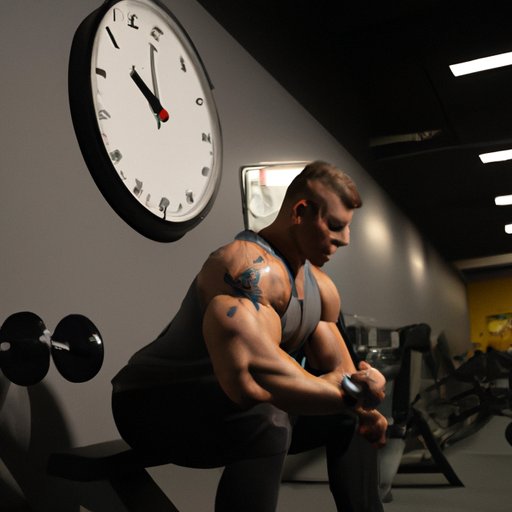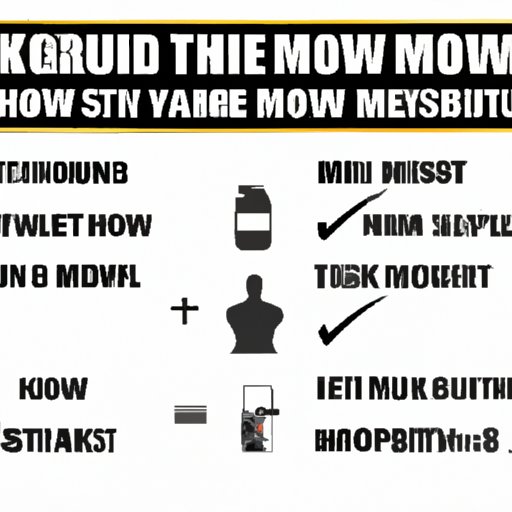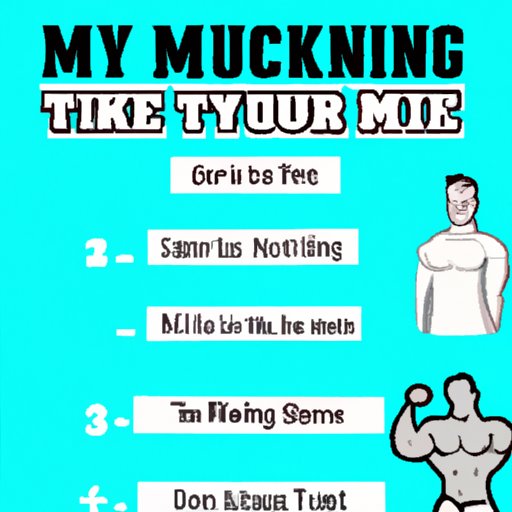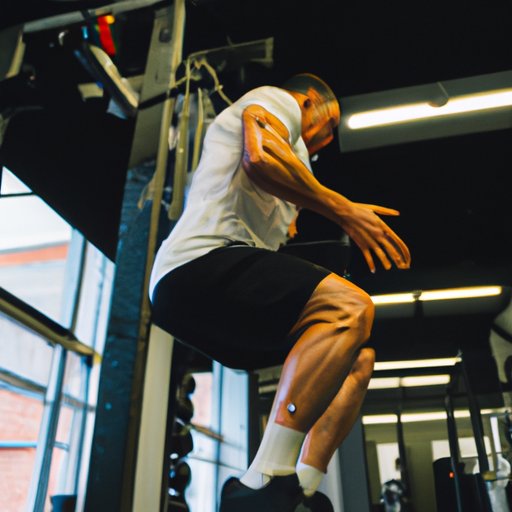Introduction
Building muscle is an important part of any fitness routine. Not only does it help you look and feel great, but it also has numerous health benefits. It helps improve bone density, strengthens your immune system, boosts metabolism, and more. But how long should a workout be in order to gain muscle?

How to Maximize Your Time in the Gym to Build Muscle
To maximize your time in the gym and build muscle, there are several things you should focus on. First, prioritize compound exercises, which involve multiple muscle groups at once. Examples include squats, deadlifts, pull-ups, and bench presses. Compound exercises will help you get the most bang for your buck when it comes to building muscle.
Second, focus on progressive overload. This means gradually increasing the amount of weight or reps you do over time. This will help ensure that your muscles are continually challenged and that you’re making progress towards your goals.
Third, shorten rest periods between sets. This will keep your heart rate up and help you burn more calories. It will also help build muscular endurance, allowing you to work out for longer periods of time.
Finally, consider incorporating supersets and circuit training into your workouts. These types of workouts involve doing two or more exercises back-to-back with minimal rest in between. This will help keep your heart rate up and allow you to get a full body workout in a shorter period of time.
The Ideal Workout Length for Building Muscle
When it comes to finding the ideal workout length for building muscle, there are several factors to consider. One factor is your current fitness level. If you’re new to strength training, you may want to start out with shorter workouts and gradually increase the length as you become more comfortable with the exercises. On the other hand, if you’re an experienced lifter, you may be able to handle longer workouts.
Another factor is your schedule. If you’re short on time, you may need to keep your workouts short and sweet. However, if you have more time available, you may be able to extend your workouts and add in extra exercises.
Finally, your goals should also influence the length of your workouts. If your goal is to build muscle, you may want to focus on longer workouts that incorporate more exercises and higher intensity. If your goal is to lose fat, however, shorter workouts may be more effective.

The Key Elements of a Short but Effective Workout for Muscle Growth
If you’re looking to maximize muscle growth in a short period of time, there are several key elements you should focus on. First, pick a few key exercises and focus on perfecting your form. This will ensure that you’re getting the most out of each exercise and that you’re targeting the right muscles.
Second, increase the intensity of your workouts with drop sets, forced reps and pauses. Drop sets involve performing one set of an exercise to failure and then immediately dropping the weight and continuing until failure again. Forced reps involve having a spotter help you lift a heavy weight for a few additional reps. Pauses involve pausing for a few seconds at the top and bottom of each rep.
Third, utilize tempo training. This involves focusing on the speed of each rep. For example, you may focus on taking three seconds to lower the weight and one second to raise it. Slowing down the reps will help you target the muscles more effectively.
Finally, change your rep ranges. Instead of doing the same number of reps each set, try changing it up. This will help keep your muscles guessing and prevent them from adapting too quickly.
What’s the Optimum Amount of Time to Spend Working Out for Muscle Gain?
The optimum amount of time to spend working out for muscle gain will vary from person to person. Generally speaking, however, 45-60 minutes per session is considered ideal. During this time, you should focus on intense compound exercises, prioritize progressive overload, and keep rest periods brief. This will help ensure that you’re making the most of your time in the gym.
It’s also important to remember to take rest days. Rest days give your muscles time to recover and rebuild, which is essential for muscle growth. Aim to take one or two days off per week and focus on active recovery activities like yoga or light cardio.

How to Make the Most of Your Workout Time for Muscle Development
In addition to following the tips outlined above, there are several other ways you can make the most of your workout time. First, consider training with a partner. Having someone there to push you and motivate you can help you stay on track and reach your goals faster.
Second, practice visualization techniques. Visualizing yourself lifting heavier weights and achieving your goals can help increase motivation and performance. It can also help you stay focused during your workouts.
Third, track your progress. Keeping track of your workouts and progress can help you stay motivated and focused on reaching your goals. It can also help you identify areas where you need to make improvements.
Finally, incorporate active recovery into your workouts. Active recovery involves doing low-intensity exercises to promote blood flow and reduce soreness. This can help reduce fatigue and speed up recovery time.
Achieving Maximum Results with Minimal Time: Gaining Muscle in a Short Workout
Gaining muscle in a short workout may sound impossible, but it’s not. High intensity interval training (HIIT) is an excellent way to get a full body workout in a short period of time. HIIT involves alternating between short bursts of high intensity exercise and rest periods. This type of workout is ideal for burning fat and building muscle in a short amount of time.
You can also follow a full body routine. This involves doing exercises that target all major muscle groups in one workout. This will help ensure that your entire body is getting a good workout and that you’re making the most of your time in the gym.
In addition, it’s important to go heavy. While you don’t want to overexert yourself, you should still challenge yourself and use heavy weights. This will help you build muscle and strength more quickly.
Finally, don’t forget to eat clean. Eating a balanced diet that’s rich in protein, healthy fats, and complex carbohydrates is essential for muscle growth. So, make sure you’re eating enough of the right foods and fueling your body properly.
Conclusion
Gaining muscle takes time and dedication. To maximize your gains, prioritize compound exercises, focus on progressive overload, and keep rest periods brief. The ideal workout length for building muscle is generally 45-60 minutes per session. However, it’s also important to factor in your current fitness level, schedule, and goals. Additionally, there are several key elements you should focus on to make the most of your workout time, such as high intensity interval training, full body routines, heavy weights, and clean eating.
Finding the right balance between time and intensity is key. Everyone is different, so experiment to find what works best for you. With consistency and dedication, you’ll be well on your way to achieving your muscle-building goals!
(Note: Is this article not meeting your expectations? Do you have knowledge or insights to share? Unlock new opportunities and expand your reach by joining our authors team. Click Registration to join us and share your expertise with our readers.)
